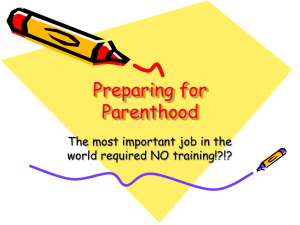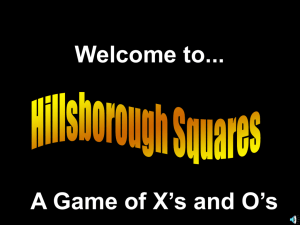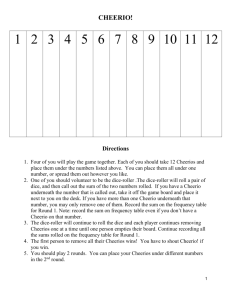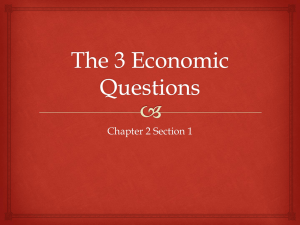11.3.1 Grade 5 Standard 4 Unit Test Static Electricity Multiple Choice
advertisement
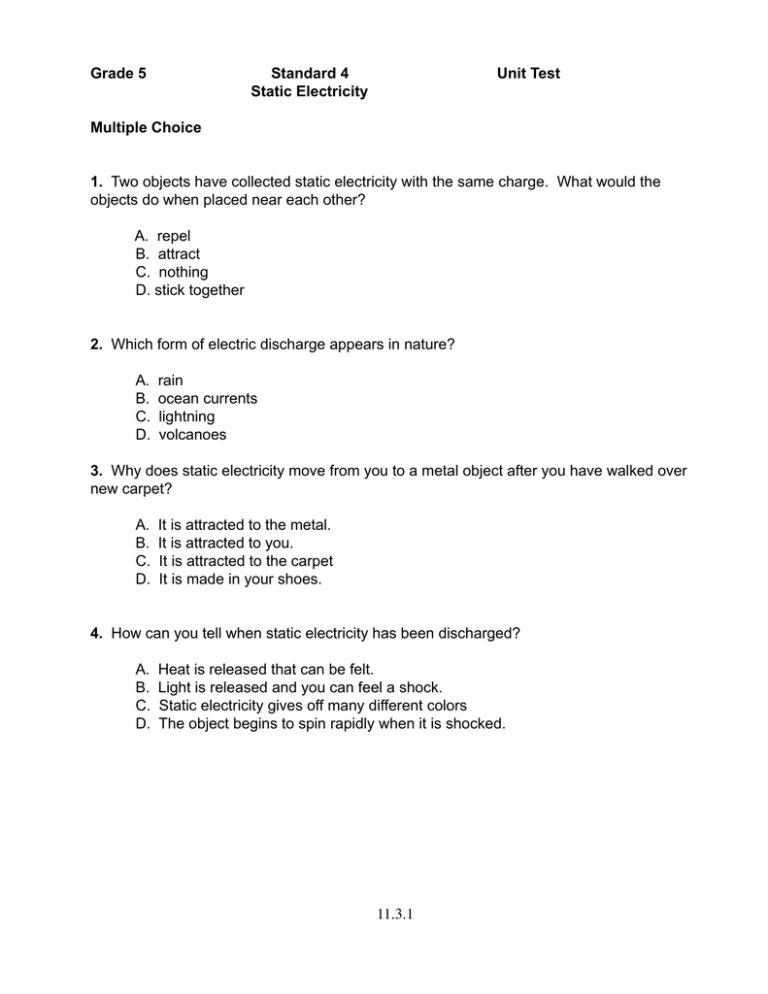
Grade 5 Standard 4 Static Electricity Unit Test Multiple Choice 1. Two objects have collected static electricity with the same charge. What would the objects do when placed near each other? A. repel B. attract C. nothing D. stick together 2. Which form of electric discharge appears in nature? A. B. C. D. rain ocean currents lightning volcanoes 3. Why does static electricity move from you to a metal object after you have walked over new carpet? A. B. C. D. It is attracted to the metal. It is attracted to you. It is attracted to the carpet It is made in your shoes. 4. How can you tell when static electricity has been discharged? A. B. C. D. Heat is released that can be felt. Light is released and you can feel a shock. Static electricity gives off many different colors The object begins to spin rapidly when it is shocked. 11.3.1 Use this diagram of a homemade electroscope to answer the next two questions. The circles are Cheerios that will take a static charge. 5. In the diagram, the Cheerios are apart. What does that indicate about the charge on the Cheerios? A. B. C. D. One Cheerio is positive, the other is negative. Both Cheerios are negative. Both Cheerios are positive. The Cheerios have the same charge. 6. Why would a comb that had been run through hair touch one cheerio and cause the two Cheerios to come together. The comb had... A. B. C. D. a negative charge. a positive charge. a different charge than the Cheerios already had. the same charge as the Cheerios already had. 7. When performing an experiment with electricity, which material would act as an insulator? A. B. C. D. staple popsicle stick wire paper clip 8. Which type of electricity moves along a pathway to turn on a light? A. B. C. D. static electricity lightning energy turbine electricity current electricity 11.3.2 9. What will happen if you add more batteries to an electrical circuit containing light bulbs? A. B. C. D. There is no change. The bulbs will dim. The bulbs will be brighter. The bulbs will last longer. 10. Which material acts as a conductor of electricity? A. B. C. D. popsicle stick rubber glove plastic button paper clip 11. Ken wanted to make a light bulb glow. Which set of materials would he need? A. B. C. D. paper cup, paper clip, and a popsicle stick D-cell battery, wire, and a light bulb button, D-cell battery, and a rubber glove D-cell battery, paper, and a bulb Constructed Response 1. What is static electricity? 2. What causes lightning? 3. How can you increase the shock you get from touching a metal object after rubbing your feet across the carpet? 4. Draw a complete circuit with a power source, switch and light. Show all connections. 5. What is current electricity? 11.3.3 Answers Standard 4 Unit Test: Multiple Choice 1. 2. 3. 4. 5. 6. 7. 8. 9. 10. 11. A C A B D C B D C D B Constructed Response 1. Static electricity is the build up of an electric charge in a certain location. The charge does not move, it stays in one place. 2. Static electricity builds up in the clouds or on the ground as air moves across Earth’s surface. When it becomes great enough, it discharges from cloud to ground or ground to cloud. 3. Rub my feet longer or more vigorously (harder, faster). 4. Answers will vary. Students may use different symbols for the circuit components. 5. Current electricity is when electrons move from one place to another. 11.3.4 Grade 5 Standard 4 Static Electricity Performance Test 1 Title: Charging Cheerios Activity Description Students will build and test a homemade electroscope. Prior to Assessment Students need to know that an electric charge can be positive or negative and that an electric charge can move. Like charges repel and unlike charges attract. When the parts of an electroscope (Cheerios in this case) move apart, they are charged. You cannot tell whether the charge is negative or positive. When they move together, the charge has been removed. If they move even further apart, the charge has been increased. Materials: Science Log Sheet (see the following pages) For each group of 2 to 3 students: Inside bag #2 wire clothes hanger Cotton thread Wool ruler Silk scissors Polyester two Cheerios Fur comb (plastic, any size) Balloon Time Needed: Allow 20 to 30 minutes for this activity. Procedure: 1. Begin by asking the students the following: “How could we measure static electricity?” (Amount of repulsion or attraction) “What happens when you walk across the carpet in your stocking feet?” (When you touch a doorknob you feel a shock.) 11.3.5 2. Form cooperative groups and have each group construct an electroscope. 3. Bend the hanger to build a stand as shown on the preceding page. 4. Measure 12 inches of thread and cut it. Tie the thread to two Cheerios, placing one Cheerio on each end of the thread. Tie the thread to the stand so that the Cheerios hang beside each other, but do not touch the table. Run the comb through your hair and bring it near the Cheerios. 5. On the Science Log page, record whether or not the Cheerios repel each other or attract each other. 6. Take out of Bag #2 a variety of labeled fabrics. Rub the comb with each of the fabrics in Bag #2 and record on the Science Log page whether or not the Cheerios repel each other or attract each other when one is touched with the comb. 7. Turn in the log page. 8. Put all the science equipment back in the bags as you found them. Scoring Guide Followed instructions carefully . . . . . . . . . . . . . . . . . . . . . . 5 points Name on Science Log sheet . . . . . . . . . . . . . . . . . . . . . . . .5 points Data sheet filled out correctly . . . . . . . . . . . . . . . . . . . . . . .10 points Questions on bottom of sheet answered . . . . . . . . . . . . . . 10 points each Total points possible on Performance Assessment . . . . . . 30 points 11.3.6 Student Science Log Sheet-Charging Cheerios Student Names _________________________________ Date _______________ ______________________________________________ ______________________________________________ Materials: wire clothes hanger thread ruler scissors two Cheerios comb (plastic, any size) Bag #2 cotton wool silk polyester fur balloon Procedure: 1. Construct an electroscope. 2. Bend the hanger to build a stand as shown on preceding page. 3. Measure and cut 12 inches of thread. Tie 12 inches of thread to two Cheerios, placing a Cheerio on each end of the thread. Tie the thread to the stand so that the Cheerios hang beside each other, but do not touch the table. Run the comb through your hair and bring it near the Cheerios. 4. Record on your Science Log sheet whether the Cheerios repel or attract each other. 5. Take bag #2 and rub the comb with each item in the bag. Touch the comb to one Cheerio. Record your data. 6. Turn in your Lab Sheet. 7. Turn in your Science Log sheets. 8. Return your materials to their places. 11.3.7 Science Log Sheet-Charging Cheerios Student Name ____________________________ Date:___________________________ ____ Object Tested Repels or Attracts Hair Cotton Wool Silk Polyester Fur Balloon 1. Which fabrics or items made the Cheerios attract each other? ______________________________________________________________________ ______________________________________________________________________ ______________________________________________________________________ 2. Which fabrics or items made the Cheerios repel each other? ______________________________________________________________________ ______________________________________________________________________ ______________________________________________________________________ 11.3.8 Grade 5 Standard 4 Static Electricity Performance Test Title: Does It Conduct? Activity Description: Students will predict which substances conduct electricity and then experimentally identify conductors and insulators of electricity. Materials: Bag # l will contain aluminum foil, key, rubber glove, quarter, button, pencil, pen, book, paper clip and a prediction form. Bag #2 will contain a battery, some wire, and a light bulb and a data sheet for experimenting with all the items listed in Bag #1. Time Needed: 50-60 minutes Procedure: Students will look at the items in their Bag #1. They will predict whether or not the item is a conductor of electricity or an insulator. They will record on their lab sheet (see next page) their prediction. Then they will take the equipment out of Bag #2 and take the battery, the light bulb and the wire and make a connection that will light the bulb. They will then go through the list and test each item. They will record their findings and compare their prediction with their experiment findings. Scoring Guide: 1. 2. 3. 4. 5. Student follows directions.................................. 5 points Student fills out prediction form ......................... 5 points Student does experiment with data recorded .... 5 points Student has name on all pages ......................... 5 points Student replaces all equipment properly ........... 5 points 11.3.9 Student Sheet Does It Conduct? Name ________________________________ Date ____________ PREDICTIONS: Item Aluminum foil Key Rubber glove Quarter Button Pencil Pen Book Paper clip Conductor Insulator EXPERIMENT FORM TAKE THE ITEMS FROM BAG #2. Make a connection that will light the light bulb. Then take each item and test it to see if the connection will light the bulb through the item. Mark conductor if it will allow the light bulb to light, mark insulator if it will not allow the light bulb to light. Compare with your prediction sheet. Item Aluminum foil Key Rubber glove Quarter Button Pencil Pen Book Paper clip Conductor Insulator 11.3.10
